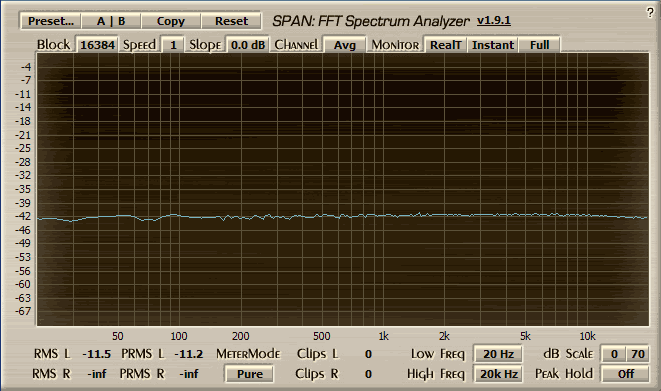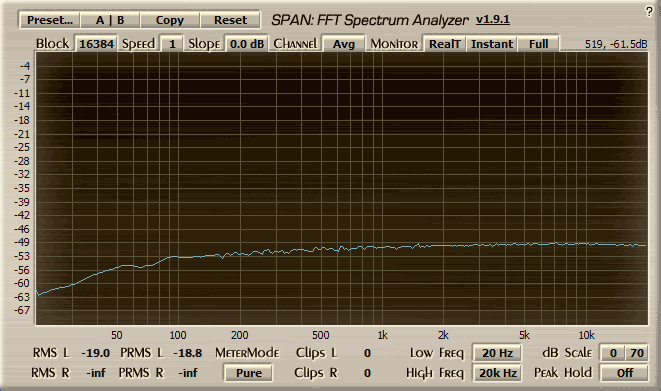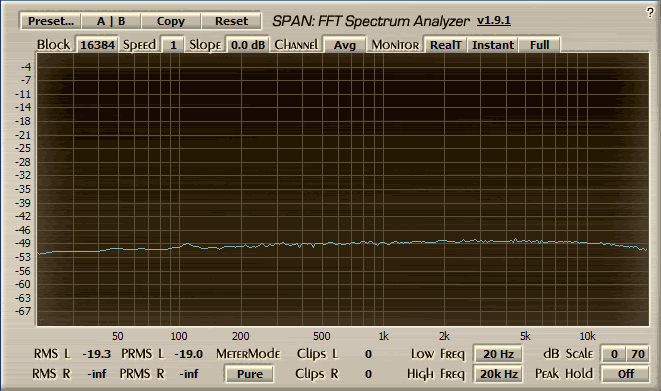Right,
These tests are white noise sent from RME HDSP 9632 analog XLR output to G9, which is sent back to the RME XLR inputs. I did the same with sine sweeps, but the plot looks exactly the same. White noise was simply the faster way to test. It was sent with -15dB level (against 0dB digital reference, forgot to measure the exact voltage).
RME HDSP 9632 XLR I/O impedance's are fairly standard for most modern AD/DA: 10kOhm input and 50 ohm output.
Here I ran the preamp unbalanced (100k from the 4,7uF to ground). This picture also looks much like RME input directly to output, ie. flat, except the slight bumps and dips of the 4.7uF cap are visible. Unbalanced G9 sounds great by the way, if maybe even "too neutral", with one less trafo on the signal path. Hums a little, but it was good enough for this test.
Here, Lundahl LL5402. Both of the G9 channels match this curve, so it's not just a broken transformer.
Here's OEP A262-A2E, which surprisingly isn't that bad. The slight high cut corresponds to the sound, which I've found to be a little on the rough side.
Gain of G9 did not change these curves by the way. These measurements were made with moderate gain of each stage. Full gain looks the same. If I forgot to mention something crucial about the test data here, ask away and I'll try to fill in the blanks.
I did not try the pad before the Lundahl yet, and probably won't as there seem to be better solutions than loss of gain. There's already barely enough for ribbon mics.
I actually have some 5687 tubes around so I'll look into changing the SRPP a bit. My heater regulator is well heat-sinked so it'll (probably) handle the extra current just fine. Hopefully it won't need a major redesign, because this stuff is already somewhat out of my league.
In any case, these lundahls are almost too neutral for my needs(not counting the bass cut problem), so I'll have look at some alternatives from Jensen and Cinemag.
[edit]
additional note about impedance mismatches. I have an SSL bus compressor (stock standard NE553X [or equivalent] semi balanced I/O), which measures ruler flat in this kind of test. I ran the G9 through the SSL to RME. The bass cut was still there.





